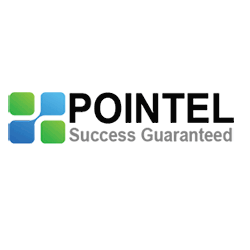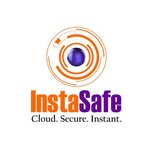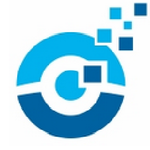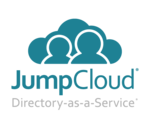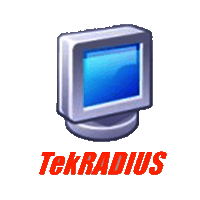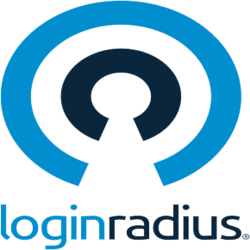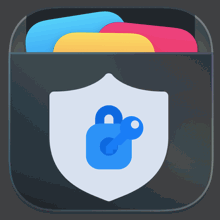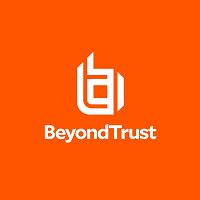Yes, most Privileged Access Management (PAM) software can be accessed from numerous devices and platforms, making it more adaptable and convenient for users. Whether you're using a desktop, laptop, or mobile device, you may safely access the PAM program from any location with an internet connection. Additionally, most PAM software is compatible with a variety of operating systems and platforms, including Windows, Mac, and Linux, making it accessible to a wide range of users.
List of 20 Best Privileged Access Management Software
Pointel ID and Access Manager, a, web-based platform designed to streamline the provisioning process for contact center solutions. This automated tool simplifies tasks such as moves, adds, changes, and deletes (MACDs), making it easier to manage user...Read More Pointel ID and Access Manager
Access Director software that streamlines access control, improves security levels, and provides a user-friendly interface. Featuring advanced permissions management, compliance assurance, and live monitoring, Access Director is an essential tool for...Read More Access Director
Instasafe Secure Access is a highly trusted software solution for businesses looking to prioritize data protection and ensure uninterrupted remote access. With its advanced encryption technology and simplified user authentication, it offers a seamles...Read More Instasafe Secure Access
System Frontier is a robust software solution designed to streamline remote management and automation for IT teams. Featuring secure privilege management, comprehensive user activity monitoring, and seamless integration with existing tools, System Fr...Read More System Frontier
OneLogin is an advanced identity and access management software designed to prioritize the protection of employee, customer, and partner data. It boasts a user-friendly interface, quick setup, and customizable authentication to streamline operations...Read More OneLogin
1Password: solution for effortless password management. Eliminate the stress of remembering multiple passwords and enjoy a worry-free lifestyle. With advanced two-factor authentication and admin control view, your passwords are doubly secure. Let 1Pa...Read More 1Password
Devolutions is a leading software offering reliable password, remote connection, and privileged access management solutions for efficient IT management. With a strong focus on security, their solutions empower organizations to enhance IT operations a...Read More Devolutions
JumpCloud DaaS is a directory platform that revolutionizes how you manage identity, access, and devices. Simplify your entire tech stack and say goodbye to the headache of fragmented systems. With JumpCloud, you can enhance security, reduce costs, an...Read More JumpCloud DaaS
Hitachi ID is a identity and access management platform that enhances security by efficiently managing credentials, enforcing strict privileged access controls, and providing seamless user authentication. It offers reliable and seamless operations, m...Read More Hitachi ID
TekRADIUS is RADIUS server designed for Windows. It is compatible with popular databases such as Microsoft SQL Server, SQLite, MySQL, MariaDB, PostgreSQL, and Oracle (via ODBC), making it easily integrated into your network infrastructure. With flexi...Read More TekRADIUS
ManageEngine ADAudit Plus is a auditing solution for Active Directory. With real-time tracking and comprehensive reports, it strengthens security measures by detecting changes made in AD. Its automatic alerts and compliance management capabilities e...Read More ManageEngine ADAudit Plus
LoginRadius - a leading cloud-based platform that revolutionizes customer identity management. Our solution offers top-notch security and compliance with major privacy regulations, making it an ideal choice for businesses. Enjoy seamless integration...Read More LoginRadius
Teleport is a access platform that guarantees robust infrastructure security by providing rapid and restricted access. With its implementation of cryptographic identity and adherence to zero trust principles, it effectively eliminates identity-based...Read More Teleport
Millennium Ultra is a cloud-based privileged access management solution recognized for its robust security features and extensive monitoring capabilities. Ideal for single entryways or large-scale facilities, this software effectively manages multipl...Read More Millennium Ultra
Easy App Locker the security software for Mac in 2022. This user-friendly solution offers a hassle-free setup process and eliminates the need for complex configurations like parental controls. With just a few clicks, you can easily add or remove priv...Read More Easy App Locker
SSH Tectia is a key management software that offers advanced security solutions for enterprises. It offers a complete range of features such as master key management, automatic access controls, scheduling, asset tracking, and database security. With...Read More SSH Tectia
BeyondTrust is a help desk software that provides unrivaled protection against unauthorized remote access and potential threats. With its flexible design and seamless integration, BeyondTrust empowers businesses to enhance security measures and boost...Read More BeyondTrust
Saviynt is a high-quality identity security platform built for cloud-based operations. It offers a comprehensive range of solutions to manage and protect identities for workforce, external, and machine users. With its advanced features, Saviynt ensur...Read More Saviynt
Okta is a identity management software that enables organizations to securely access users, devices, and applications. With its smooth integrations and exceptional support, it offers a seamless user experience, boosts productivity, and easily adapts...Read More Okta
NetIQ is a identity and access management software designed to enhance security and ensure compliance within enterprise networks. Its advanced features for user authentication, governance, and access control effectively protect sensitive data and str...Read More NetIQ
Learn More About Privileged Access Management Software
- What Is Privileged Access Management Software?
- What Are The Recent Trends In Privileged Access Management Software?
- Benefits Of Using Privileged Access Management Software
- Important Factors To Consider While Purchasing Privileged Access Management Software?
- What Are The Key Features To Look For In Privileged Access Management Software?
- Why Do Businesses Need Privileged Access Management Software?
- How Much Time Is Required To Implement Privileged Access Management Software?
- What Is The Level Of Customization Available In Privileged Access Management Software?
- Which Industries Can Benefit The Most From Privileged Access Management Software?
- Conclusion
What Is Privileged Access Management Software?
Privileged Access Management Software is a specialized security solution that manages and controls privileged user access to vital systems and sensitive data. Simply put, it is a solution that assists businesses in securing and monitoring privileged accounts, which have elevated permissions and the potential to cause substantial damage if breached.
At its core, Privileged Access Management (PAM) software creates a safe environment in which privileged users, such as system administrators, can access the resources they require to perform their duties. This is typically accomplished using a variety of features such as centralized authentication, separation of roles, privileged session management, and password management.
One of the key reasons for deploying PAM software is to reduce the danger of insider threats. Controlling and monitoring privileged access allows organizations to prevent unscrupulous insiders from exploiting their enhanced permissions to steal sensitive data or disrupt vital systems. Furthermore, PAM software includes a thorough audit trail, allowing enterprises to monitor all privileged user activity for compliance and post-incident investigations.
PAM software can also help firms comply with different regulatory obligations, such as the Payment Card Industry Data Security Standard (PCI DSS) and the General Data Protection Regulation (GDPR), by assuring accountability and restricting access to sensitive data. When looking for a PAM solution, customers should analyze their individual business requirements as well as the features provided by various suppliers.
Some important elements to examine include the type of privileged credentials supported, the level of automation and integration with other security solutions, the solution's scalability, and the general simplicity of use for both administrators and end users. It is also critical to assess the vendor's reputation, client reviews, and support services to assure the software's dependability and performance.
What Are The Recent Trends In Privileged Access Management Software?
Privileged access management (PAM) software has become a vital tool for enterprises looking to protect their critical systems, assets, and data. As cyber threats evolve and worsen, businesses are aggressively investing in PAM solutions to strengthen their security strategy. In this article, we will look at the latest trends in PAM software and why they are important for firms trying to improve their cybersecurity posture.
1. Move Towards Cloud-Based PAM Solutions: Businesses are increasingly turning to cloud-based PAM solutions as cloud technology becomes more widely adopted. These systems provide the same level of protection as on-premises solutions, but with greater scalability and flexibility. Cloud-based PAM enables enterprises to control and monitor privileged access across all cloud environments, thereby improving data and asset security.
2. Integration With Artificial Intelligence (AI): AI has drastically transformed the cybersecurity landscape. PAM companies are implementing AI and machine learning capabilities into their products to better threat detection and authentication. AI-powered PAM solutions can detect and flag anomalous user activity, allowing enterprises to keep ahead of any insider risks.
3. Increased Coverage Of Privileged Access: Traditionally, PAM solutions were aimed at managing privileged access for a small number of people, such as system administrators. However, as cyber threats increase, organizations recognize the importance of managing all privileged accounts, including those of third-party vendors, contractors, and even staff with temporary elevated access. PAM solutions are increasingly expanding their ability to include a broader range of privileged accounts, making it easier for businesses to safeguard all of their essential systems and data.
4. Improved User Experience: Previously, PAM solutions were noted for their complex user interfaces and time-consuming authentication processes. However, current trends indicate that PAM suppliers are focusing on offering a seamless and user-friendly experience for both administrators and end-users. This includes features like as single sign-on, self-service password resets, and multi-factor authentication, which make it easier for enterprises to use PAM while maintaining user productivity.
5. Audit And Compliance Reporting: Regulatory compliance and auditing are important concerns for enterprises, and PAM software has evolved to meet these requirements. Many PAM solutions now have complete reporting and auditing capabilities, allowing businesses to monitor privileged access and assure compliance with standards such as PCI-DSS and HIPAA.
Benefits Of Using Privileged Access Management Software
Privileged Access Management (PAM) software is an essential tool for firms looking to safeguard their sensitive data and IT infrastructure against cyber attacks. This sort of software provides a comprehensive solution for controlling and safeguarding privileged access, which is a common target for hostile actors looking to obtain unauthorized access to a company's systems.
1. Improved Security: One of the key advantages of utilizing PAM software is the increased security it offers. PAM allows businesses to maintain strong control over privileged accounts by deploying methods such as password management, multi-factor authentication, and session monitoring. This guarantees that only authorized workers have access to sensitive information, lowering the likelihood of data breaches and insider threats.
2. Improved Compliance: PAM software assists firms in meeting a variety of regulatory standards, including GDPR, HIPAA, and PCI DSS. These requirements frequently require firms to have tight procedures for managing and monitoring privileged accounts. PAM systems offer a consolidated platform for monitoring and auditing privileged access, making it easier for enterprises to meet compliance requirements.
3. Streamlined Access Management: PAM software allows enterprises to simplify the process of granting, removing, and monitoring privileged access. This eliminates the need for manual, error-prone ways to manage privileged accounts, such as spreadsheets or shared passwords. PAM solutions provide centralized, automated operations that save time while lowering the possibility of human mistake.
4. Increased Visibility: PAM software gives businesses a thorough view of privileged account actions, such as who accessed what and when. This visibility enables enterprises to better monitor and detect suspicious or illegal actions, allowing them to respond quickly and mitigate possible security issues.
5. Increased Efficiency: PAM software reduces the manual, time-consuming duties associated with managing privileged accounts, freeing up IT personnel to focus on other important activities. PAM software, which includes capabilities such as automated password rotation and session management, has the potential to greatly boost IT productivity.
Important Factors To Consider While Purchasing Privileged Access Management Software?
When looking for privileged access management software, you should consider a number of things to ensure that you are making the best decision for your firm.
Here are some crucial aspects to consider when assessing alternative options:
1. Security Features: The major goal of privileged access management software is to protect and manage sensitive information and critical systems. As a result, it is critical to look for a system that includes strong security features such as encryption, multi-factor authentication, and granular access controls.
2. Usability: Complex and clunky software might be difficult to implement and maintain. Choose a system that is intuitive and user-friendly, with a simple interface that your team can quickly use.
3. Integration Capabilities: Your privileged access management technology should work seamlessly with your existing systems and applications. It should also support a variety of authentication techniques and protocols to meet your organization's specific requirements.
4. Scalability: As your organization expands, so will your needs for privileged access management. As a result, it is critical to select software that can readily grow up to meet your future requirements while minimizing changes and disruptions.
5. Auditing And Reporting: The ability to track and document privileged access activities is critical for compliance and regulatory requirements. Make sure the software you purchase has strong auditing and reporting capabilities.
6. Flexibility And Customization: Each business is unique, and your privileged access management solution should reflect this. Look for software that is adaptable and allows you to change features and settings based on your business needs.
7. Training And Support: Before investing in any program, be sure you have access to suitable training resources and dependable customer support. This will allow your team to swiftly catch up and address any difficulties that may develop during implementation or use.
8. Pricing Model: Prices for privileged access control solutions might vary greatly. Research and compare many possibilities to see which one matches your budget and provides the most value for money.
Consider these factors when selecting privileged access management software to make an informed selection and select a solution that matches your organization's specific needs. Remember to carefully consider all possibilities before making a final decision to ensure that you are investing in the best solution for your company.
What Are The Key Features To Look For In Privileged Access Management Software?
When selecting a Privileged Access Management (PAM) program, purchasers should examine a number of critical aspects. These features not only protect privileged accounts, but also give administrators and end users with a streamlined and efficient experience.
Here are some of the key features to look for in PAM software:
1. Centralized Management: The first and most important feature to look for in PAM software is the ability to centrally manage privileged accounts. This entails having a single dashboard from which to monitor and regulate all privileged access activity. It enables administrators to simply monitor and track user behavior, enforce regulations, and grant access to privileged accounts.
2. Granular Privilege Control: The next important aspect to consider is the ability to give and remove privileges at the granular level. This implies being able to specify which people or groups have access to particular systems or resources, and for how long. Granular privilege management allows organizations to reduce the risk of potential dangers including insider attacks and criminal behavior.
3. Multi-Factor Authentication: Another key feature to look for is multi-factor authentication (MFA). This increases security by asking users to submit additional verification, such as a unique code or biometric authentication, in addition to their login credentials. MFA helps to prevent unwanted access and improves the overall security of privileged accounts.
4. Session Monitoring And Recording: Session monitoring and recording is an important function in PAM software since it enables real-time monitoring of privileged sessions. This means that administrators can monitor and record all actions taken by a user during a privileged session, resulting in a detailed audit trail. This capability allows enterprises to swiftly identify and respond to possible dangers in the event of any suspicious or unauthorized activity.
5. Password Management: PAM software should also include strong password management capabilities. This includes options like password rotation, complex password generating, and secure storage. These features assist companies in strengthening their privileged account passwords, preventing password sharing, and mitigating the risk of password-related attacks.
6. Integration With IT Infrastructure: It is critical to select a PAM solution that can work flawlessly with the existing IT infrastructure. This means that the software should be compatible with a variety of systems, applications, and databases, ensuring that all privileged accounts are protected. This also contributes to the smooth implementation and management of the PAM system.
7. Compliance And Reporting: The last key factor to examine is compliance and reporting. PAM software should have compliance reporting features to assist firms in meeting regulatory standards and corporate regulations. It should generate detailed reports on privileged account activity, user behavior, and other relevant indicators that can be used in audits and compliance.
Why Do Businesses Need Privileged Access Management Software?
Businesses today confront an increasing number of cyber threats, therefore protecting sensitive data and systems is a major issue. With the rise of complex attacks, basic security solutions like firewalls and anti-virus software are no longer adequate to protect against intrusions. This is where the Privileged Access Management (PAM) software comes in.
Privileged Access Management software aims to improve security by controlling and monitoring access to important systems and data. It gives privileged users, such as system administrators, a secure way to view sensitive data and carry out their jobs without jeopardizing the organization's security. One of the primary reasons firms want PAM software is to prevent unauthorized access to sensitive data and systems.
PAM enables enterprises to restrict access to just authorized individuals, lowering the danger of internal threats and external attacks. Furthermore, PAM software provides extra layers of protection by incorporating multi-factor authentication and session monitoring. This means that even if a privileged account is hacked, the attacker will still have to circumvent other security protections to gain access to the system.PAM software assists enterprises in meeting regulatory standards in addition to providing security.
Many sectors have rigorous rules in place to secure sensitive data, and PAM solutions provide the controls and auditing capabilities required to achieve these standards. Furthermore, PAM software increases operational efficiency while saving time and resources. With unified management of privileged accounts, IT teams can quickly control and monitor access, decreasing the need for manual processes and enhancing productivity.
How Much Time Is Required To Implement Privileged Access Management Software?
Implementing Privileged Access Management (PAM) software can be a time-consuming and complex procedure due to the numerous steps and considerations required. The actual time necessary to implement PAM software varies according to the organization's size and complexity, as well as the exact features and capabilities of the chosen software. On average, the initial setup of PAM software can take 6-12 weeks.
This time range comprises the planning and deployment phases, as well as training and testing to verify that the software is completely integrated and functional. The first step in the implementation process is to identify the organization's specific needs and requirements. This includes evaluating existing security policies and detecting any gaps or vulnerabilities in the current systems.
Once this is completed, the business can select a PAM solution that meets their specific requirements. The next step is deployment, which entails installing and configuring the PAM software on the organization's computers and network. This process may take many weeks, depending on the complexity of the infrastructure. Training and testing are critical elements in the implementation process since they ensure that all essential personnel understand the software and its features.
This may take an extra 2 to 4 weeks, depending on the number of staff and their availability for training. Finally, once the PAM software has been fully deployed and tested, it is critical to conduct a thorough assessment and make any necessary changes to ensure that everything is working as planned. This final stage may take an additional week or two to complete.
What Is The Level Of Customization Available In Privileged Access Management Software?
Privileged Access Management (PAM) software is an essential tool for organizations that want to protect sensitive data and systems by regulating and monitoring privileged access to networks. One of the most important considerations when selecting a PAM solution is the level of customisation available. In this buyer's guide, we'll look into the different features of customisation in PAM software to help you make an informed purchase.
The extent of customisation in PAM software varies widely between providers. Some solutions enable little to no customization, but others offer a significant level of flexibility, allowing firms to modify the software to their specific requirements. One aspect of customisation to consider is the ability to add or delete features or modules as needed.
A decent PAM solution should have a modular design, allowing you to select only the capabilities you require and avoid paying for unnecessary functionality. Additionally, the software should allow you to design workflows and rules that are consistent with your organization's policies and compliance standards. This includes setting up approval processes, access limitations, and password regulations based on your individual requirements.
Furthermore, the ability to interface with other security and IT solutions is critical for a comprehensive PAM strategy. Look for a solution that integrates seamlessly with your current technologies, such as privileged credential management tools, multi-factor authentication, and security information and event management (SIEM) systems. Another important feature of customisation is the user interface (UI). A customizable UI allows you to personalize the software's appearance and feel to meet your organization's branding and visual design.
This improves the user experience while also making it easier for your IT team to navigate and operate the product. Finally, the extent of customisation depends on the deployment model provided by the PAM program. On-premises solutions often provide additional customization choices because they provide you complete control over the software's environment. However, cloud-based solutions are becoming more customisable as more providers offer flexible setups and integration APIs.
Which Industries Can Benefit The Most From Privileged Access Management Software?
Privileged access management software is an essential tool for enterprises across industries who value data security and regulatory compliance. This comprehensive solution assists organizations in securing, monitoring, and managing privileged accounts, which are frequently targeted by cyber attackers due to their increased access to critical data. However, certain businesses can greatly benefit from the use of privileged access control software.
Let's look at a few of these industries and how they might use technology to improve their security posture.
1. Banking & Finance: Banks and financial organizations store massive amounts of personal and financial information, making them an ideal target for cybercriminals. Furthermore, compliance rules such as the Gramm-Leach-Bliley Act (GLBA) and the Payment Card Industry Data Security Standard (PCI DSS) mandate tight controls over privileged access to sensitive data. Privileged access management software allows these businesses to restrict and monitor access to vital systems and data, ensuring compliance and reducing the risk of data breaches.
2. Healthcare: The healthcare business is progressively adopting digital platforms, which means that a large amount of sensitive patient data is being held online. This makes them a tempting target for fraudsters wanting to resell this information on the dark web. Healthcare firms must also adhere to requirements such as the Health Insurance Portability and Accountability Act (HIPAA), which compels them to protect patient data. Privileged access management software assists healthcare facilities in meeting compliance standards while protecting patient data from unwanted access.
3. Government And Military: Government organizations and military units frequently manage sensitive national security information and key infrastructure, making them prime targets for cyberattacks. Privileged access management software offers these enterprises a centralized system for managing and controlling privileged access, ensuring that only authorized workers have access to sensitive data and systems.
4. IT And Managed Service Providers (MSPs): IT services and MSPs manage their clients' technology infrastructures, therefore they are responsible for protecting their data. These firms manage a high number of privileged credentials, therefore any compromise can have serious effects. Privileged access management software enables IT services and managed service providers to secure and monitor privileged access to their clients' systems, assuring data confidentiality and integrity.
5. Retail & E-commerce: The retail and e-commerce industries rely significantly on user data, making them a tempting target for cybercriminals. Furthermore, e-commerce websites frequently have several third-party vendors with privileged access to their systems, posing additional risks. Privileged access management software enables these firms to regulate and monitor privileged access across their digital ecosystem, lowering the risk of a data breach and preserving consumer trust.
Conclusion
In conclusion, investing in Privileged Access Management (PAM) software is a crucial step towards securing your organization's critical assets and sensitive data. The right PAM solution not only enhances security but also streamlines access processes, increases productivity, and ensures compliance with regulations. Before making a purchase, consider your company's unique requirements and evaluate different solutions based on their features, ease of use, integration capabilities, and customer support. Additionally, keep in mind the scalability and cost-effectiveness of the software to ensure a long-term return on investment.
With the growing risk of cyber attacks, PAM software is no longer a luxury but a necessity for any organization that wants to protect its digital assets. We hope this buyer's guide has provided you with valuable insights and helped you make an informed decision when choosing the right PAM solution for your business. Remember to continuously monitor and update your PAM software to stay ahead of potential threats and ensure the security of your organization's privileged access.
Privileged Access Management Software FAQ's
Can Privileged Access Management Software Be Accessed Across Multiple Devices And Platforms?
Is Privileged Access Management Software Future-Proof And Adaptable To Emerging Technologies Like AI, Blockchain Or IoT?
Privileged Access Management Software is always evolving to keep pace with emerging technologies such as AI, blockchain, and IoT. These solutions are future-proof and adaptive, with powerful capabilities for managing and securing privileged access across a wide range of applications, repositories, and systems. They are designed to work seamlessly with emerging technologies, allowing organizations to retain a strong security posture and secure their vital assets while implementing new innovations.
Is There A Free Trial Offered To Assess Privileged Access Management Software Before Committing?
While each Privileged Access Management (PAM) software vendor may have various free trial policies, it is typical for them to provide a free trial time for consumers to evaluate the software before making a purchase decision. This enables enterprises to test the features and functionality to verify they satisfy their specific needs. It is recommended that you use free trials to properly grasp the capabilities and benefits of a PAM solution.
Does Privileged Access Management Software Offer Data Security Features And Meet Regulatory Compliance Standards?
Yes, Privileged Access Management Software includes comprehensive data security capabilities to keep critical information secure from unwanted access. It protects data security, integrity, and availability by mechanisms such as identity verification, permission-based access, and privileged session monitoring. Furthermore, this software complies with a variety of regulatory requirements, including HIPAA, GDPR, and PCI DSS, making it a reliable alternative for firms dealing with sensitive data.
Can Privileged Access Management Software Integrate Seamlessly With Existing Tools And Platforms?
Yes, most Privileged Access Management (PAM) software works smoothly with existing tools and platforms. This is accomplished through the use of APIs and connectors that enable the PAM software to communicate and exchange data with other systems in the IT architecture.
Furthermore, PAM providers frequently include pre-built connections with popular systems like Active Directory, SIEM, and ticketing systems, which makes the integration process even easier. This enables enterprises to centralize their privileged access restrictions and improve their overall security posture while maintaining their current procedures.

